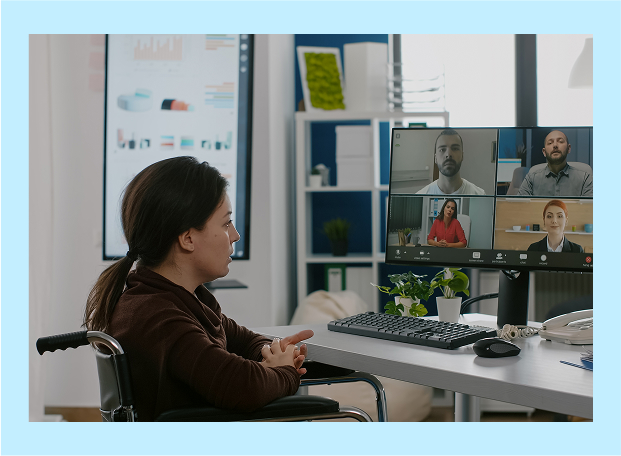In today’s increasingly globalized landscape, effective communication across diverse languages is paramount. While translation between major languages is common, navigating less frequently paired languages like Urdu to Dutch Translation presents unique challenges. Businesses, individuals, and organizations operating or interacting with communities speaking these languages often encounter hurdles related to linguistic nuances, cultural context, and resource availability. This article explores these specific difficulties and outlines practical solutions to ensure accurate and effective communication. Solutions like Doctranslate.io offer innovative approaches to streamline document translation, even for complex language pairs, helping bridge these gaps in a globalized world where the need for multilingual support is growing, as seen in various sectors and regions, including Japan’s increasing interaction with foreign nationals.
Challenges in Urdu Translation, Especially Urdu to Dutch Translation
Translating between any two languages involves navigating grammatical structures, vocabulary, and idiomatic expressions. However, the complexity significantly increases with languages from different linguistic families and cultural backgrounds, such as Urdu and Dutch. Urdu, an Indo-Aryan language with significant influence from Arabic, Persian, and Turkish, possesses a rich vocabulary and complex grammatical structure, often written in the Nastaliq script. Dutch, a West Germanic language, has a distinct structure and vocabulary. The disparity isn’t just linguistic; it’s cultural.
A significant challenge in environments with increasing foreign populations, such as Japan, where companies face labor shortages and look to foreign workers, is the communication barrier. As highlighted by 人材不足の企業必見!外国人雇用で課題を解決する方法とは? – キャリアリンクファクトリー, addressing these barriers requires countermeasures like translation tools and multilingual apps. While this article discusses the general need, applying this to specific pairs like Urdu to Dutch Translation reveals deeper issues.
For Urdu to Dutch Translation specifically, the scarcity of highly skilled translators proficient in both languages and capable of accurately conveying cultural context is a major hurdle. Unlike more common language pairs, the pool of experienced professionals who understand the subtle socio-cultural connotations embedded in both Urdu and Dutch communication is limited. This scarcity can lead to longer turnaround times and higher costs.
Furthermore, ensuring data quality and accuracy in translation is critical, particularly when dealing with important documents or technical content. While a document discussing data quality frameworks in fields like pharmaceuticals (as seen in translations related to EU medicines regulation) highlights the challenge broadly, applying this to Urdu to Dutch Translation underscores the difficulty in verifying the quality and consistency of translated information when resources are scarce and linguistic differences are vast.
Solutions for Effective Urdu to Dutch Translation
Overcoming the challenges in Urdu to Dutch Translation requires a strategic approach that leverages both human expertise and advanced technology. While perfect machine translation for every nuance remains a future goal, technological advancements are rapidly improving capabilities across various language pairs.
Combining the strengths of human translators with sophisticated translation tools is key. Human translators provide the critical cultural context, idiomatic accuracy, and nuanced understanding that machines currently lack, especially for complex texts. Technology, such as machine translation engines and translation memory software, can significantly accelerate the process for repetitive content and provide initial drafts for human post-editing.
The trend towards integrating advanced translation capabilities into widely used platforms is evident. For instance, developments in live translated captions and transcripts supporting multiple languages demonstrate the increasing reliance on and improvement of machine translation technology, which can eventually benefit a broader range of language pairs, potentially including aspects of Urdu to Dutch Translation.
Implementing robust quality assurance processes is also essential. This includes using glossaries and style guides to ensure consistency, employing review and editing steps by native speakers of the target language (Dutch), and potentially back-translation to verify accuracy for critical content. For document-based translation needs, finding platforms that can handle various file formats and maintain formatting while translating is crucial for efficiency and usability.
Implementing Successful Urdu to Dutch Translation Strategies
Successfully implementing an Urdu to Dutch Translation strategy involves selecting the right tools, partners, and workflows. For businesses interacting with Dutch-speaking individuals who speak Urdu, providing clear, translated documentation is vital for everything from employment contracts to safety manuals. As mentioned in the context of supporting foreign workers in Japan, providing multilingual tools and resources helps overcome communication barriers.
Platforms designed for efficient document translation can significantly streamline this process. Doctranslate.io, for example, specializes in accurately translating documents while preserving original formatting. This is particularly valuable when dealing with diverse document types that require Urdu to Dutch Translation, ensuring that the final output is not only linguistically accurate but also immediately usable. Such tools can handle the initial translation efficiently, allowing human experts to focus on refining the output for cultural and contextual appropriateness.
Furthermore, understanding the specific context and purpose of the translation is paramount. Is it for formal legal documents, casual communication, or technical instructions? The required level of accuracy, tone, and localization will vary. Working with translation providers or using platforms that allow for customization based on domain (e.g., legal, technical, general) and tone can enhance the quality of the final translation for pairs like Urdu to Dutch Translation.
Finally, ongoing evaluation and feedback loops are crucial. As translation technology evolves and as users interact with translated content, gathering feedback helps refine processes, update resources, and improve the overall quality of Urdu to Dutch Translation services provided, ensuring they meet the needs of an increasingly connected world.
Effective Urdu to Dutch Translation is a complex but achievable goal. By acknowledging the unique linguistic and cultural challenges, leveraging appropriate technology, implementing rigorous quality controls, and utilizing platforms designed for efficient document translation, organizations and individuals can successfully bridge the language gap, fostering better communication and understanding.


Leave a Reply